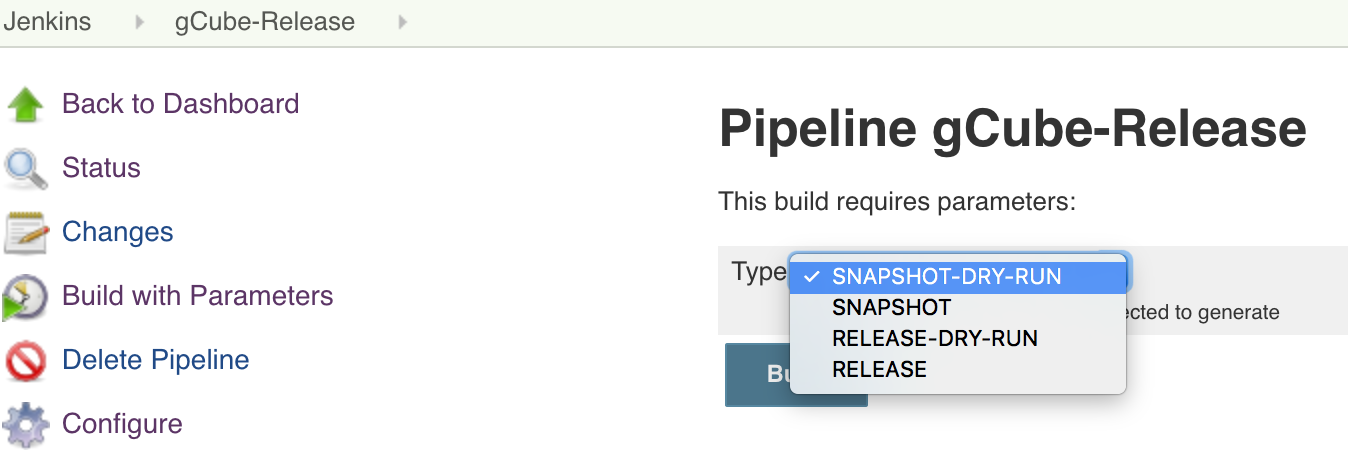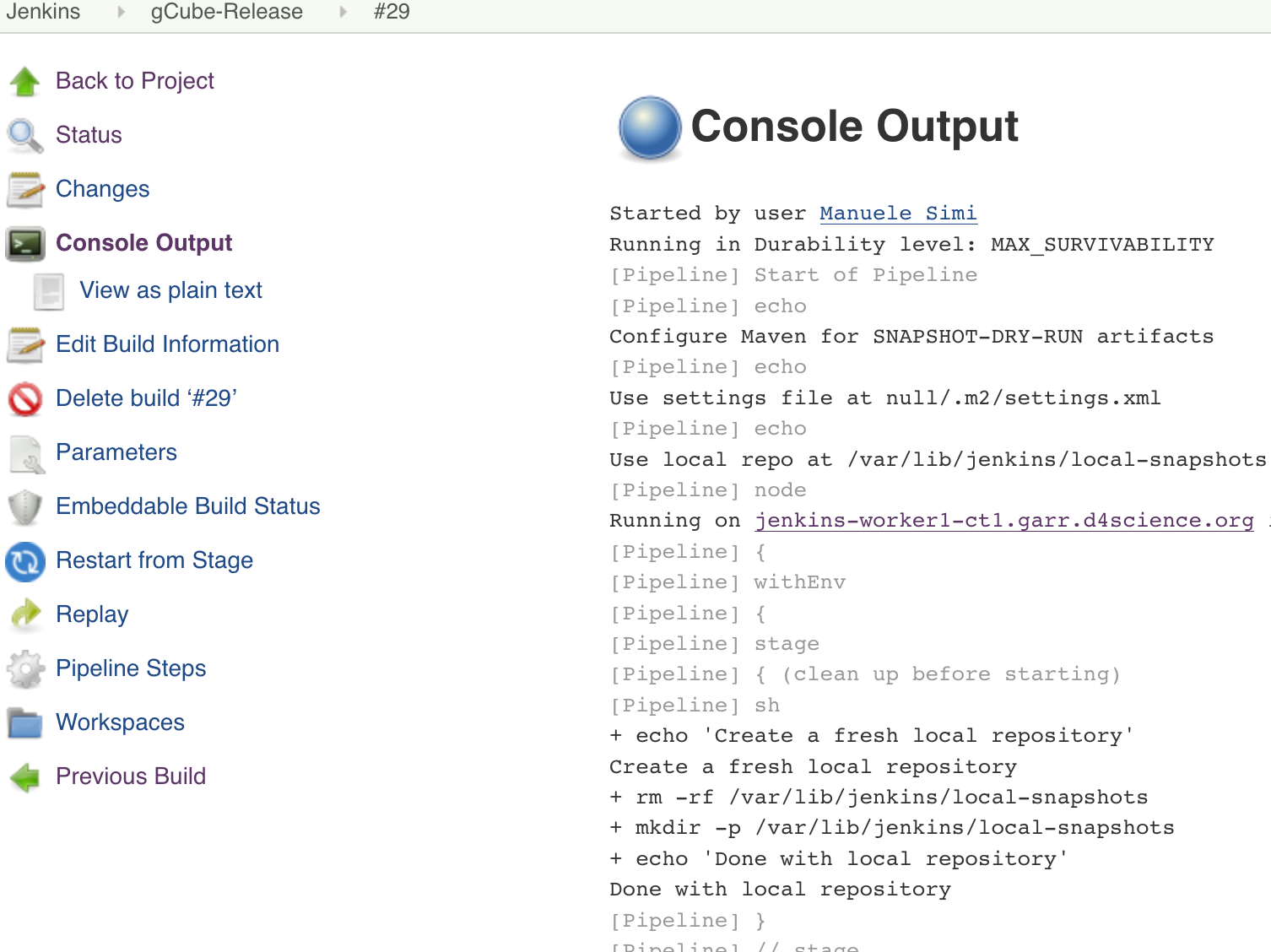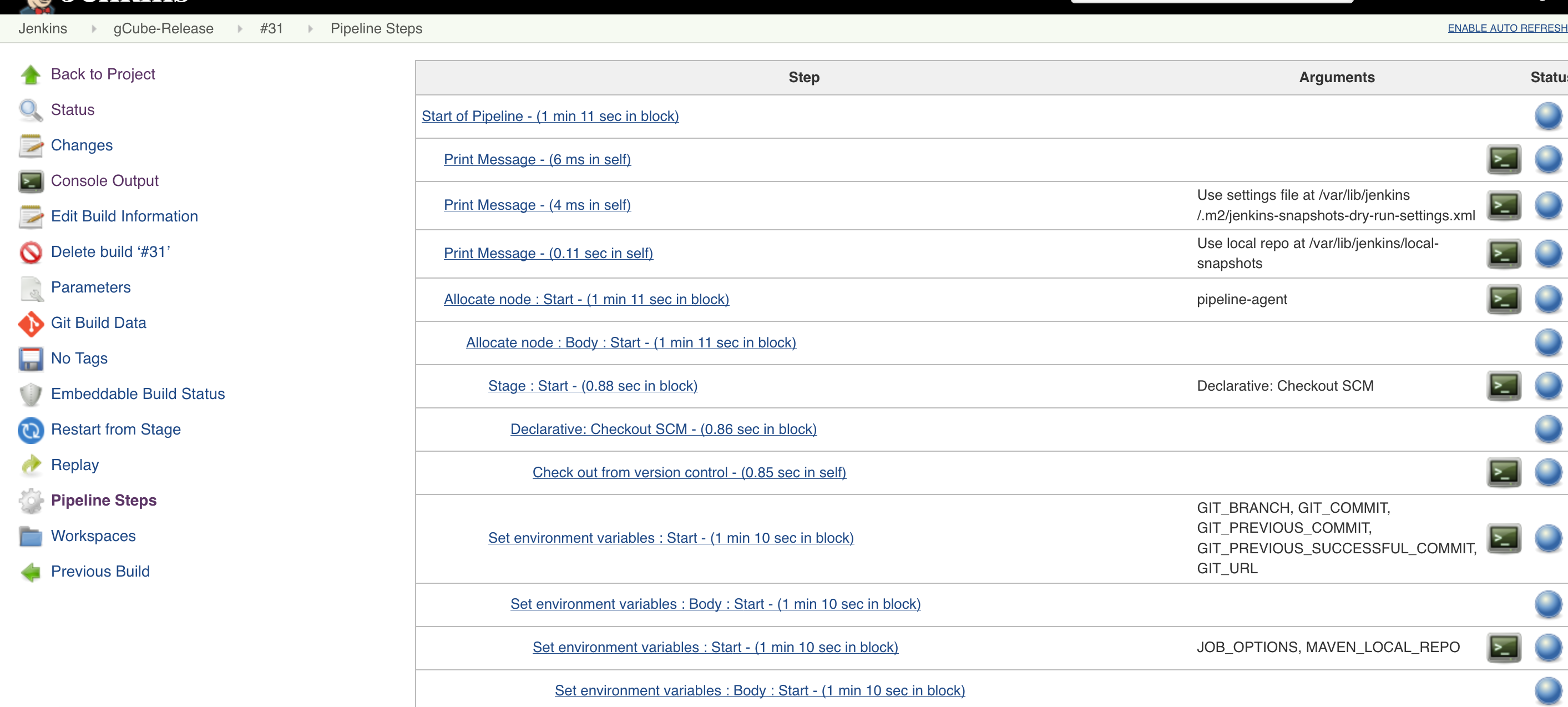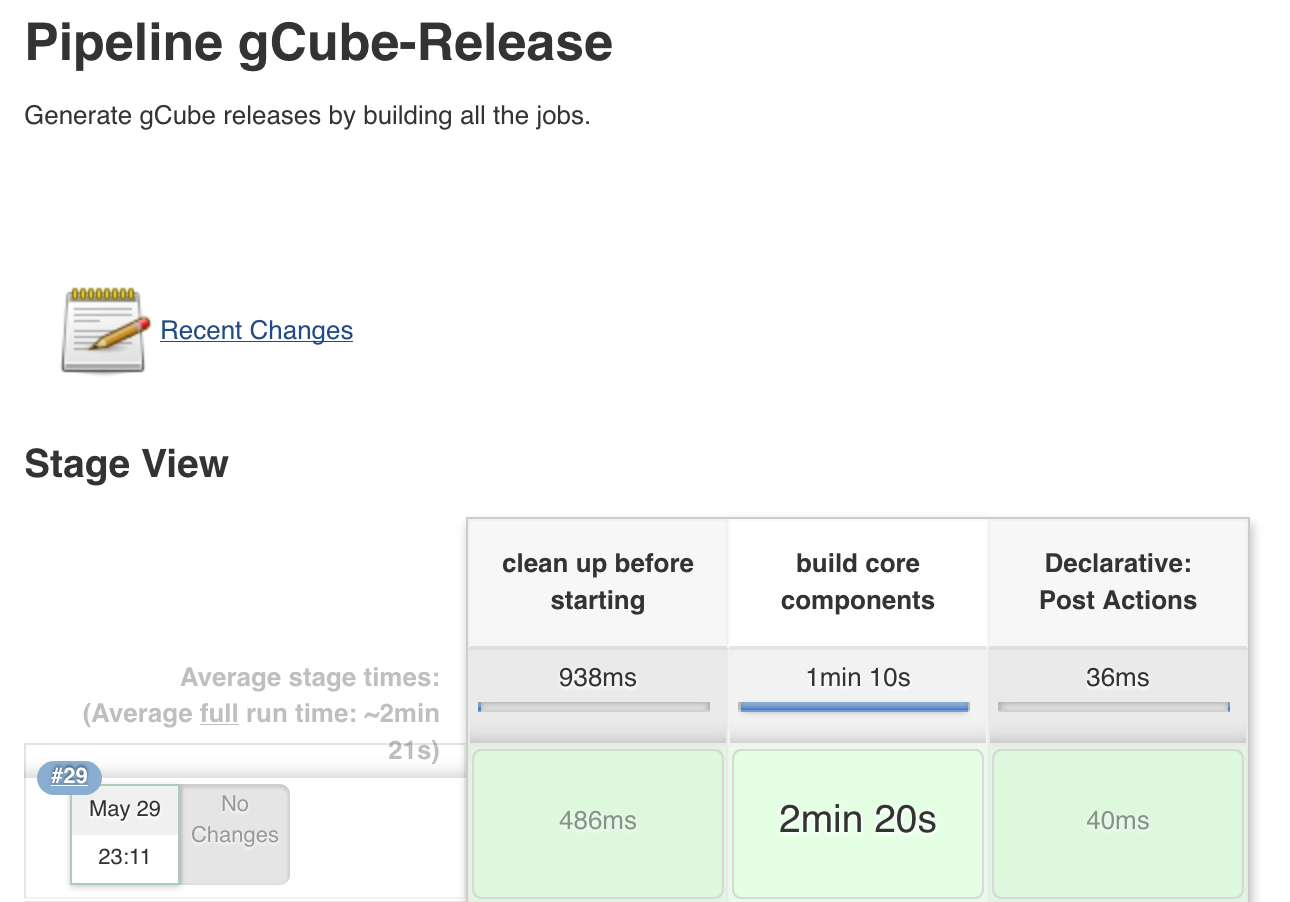Continuous Integration: Releases Manager
Contents
Responsibilities
The Release Manager is in charge of:
- Declaring when a gCube release is open and when it is closed
- Preparing the release file for each new gCube release
- Launching the build of the gCube Release Pipeline
- Storing the commits report generated by the gCube Release Pipeline in its Gitea repository
- Launching the build of the gCube Tagging Pipeline
- Storing the tag report generated by the gCube Tagging Pipeline in its Gitea repository
Pipeline Reports on Git
The Release Manager is responsible for manually pushing the reports generated by the jenkins pipelines to Git.
The build commits report generated by the gCube Release Pipeline must be stored in the pipeline git repository as
https://code-repo.d4science.org/gCubeCI/gCubeRelease/raw/branch/master/releases/<gcube_release_version>/build_commits.<report_number>.csv.
The tag report generated by the gCube Tagging Pipeline must be stored in the pipeline git repository as
https://code-repo.d4science.org/gCubeCI/gCubeRelease/raw/branch/master/releases/<gcube_release_version>/tags.<report_number>.csv.
Jenkins Activities
Configure the Pipeline
A release file must be created for each new Jenkins release.
Launch the Pipeline
In Jenkins:
- select the gCubeRelease project
- on the left side, click on 'Build with Parameters'
- select the type of build we want to generate in the choice menu
- input the release version to build (must match the release file name and the version reported in the file itself). E.g. 4.14.5.
- click on the 'Build' button
Type of Build
The Pipeline project can be launched in 4 different ways (Type parameter):
- SNAPSHOT-DRY-RUN (default)
- build snapshot artifacts, install the artifacts in a local repo, do not deploy
- SNAPSHOT
- build snapshot artifacts, install the artifacts in a local repo, deploy the artifacts to the gcube-snapshots Maven Repository
- RELEASE-DRY-RUN
- build release artifacts, install the artifacts in a local repo, do not deploy
- RELEASE-STAGING
- build release artifacts, install the artifacts in a local repo, deploy to the gcube-staging-jenkins Maven Repository
- RELEASE
- build release artifacts, install the artifacts in a local repo, deploy the artifacts to the gcube-releases Maven Repository
The idea behind these builds is that the Release Manager can test the full pipeline execution with the DRY-RUN builds. Once all the projects in the build work, the SNAPSHOT or RELEASE build can be launched to effectively deploy the artifacts on the remote Maven Repository.
Monitor the Execution
As any other job execution, the pipeline can be monitored step-by-step in the Console Output page of the ongoing build:
In addition, the Pipeline steps page (also accessible from the build page) shows the various steps and links to the other builds executed within the pipeline:
Stages Report
At least one “stage” section must be defined on the “stages” section of the pipeline. It will contain the work that the pipeline will execute. Stages must be named accordingly since Jenkins will display each of them on its interface, as shown here:
Pipeline Activities
The Release Manager has to work on the Jenkins Pipeline configuration according to each release's requirements. Here are some sample activities:
- add/remove groups in the YAML configuration
- keep the agent label in sync with Jenkins config
Back to the CI guide.



